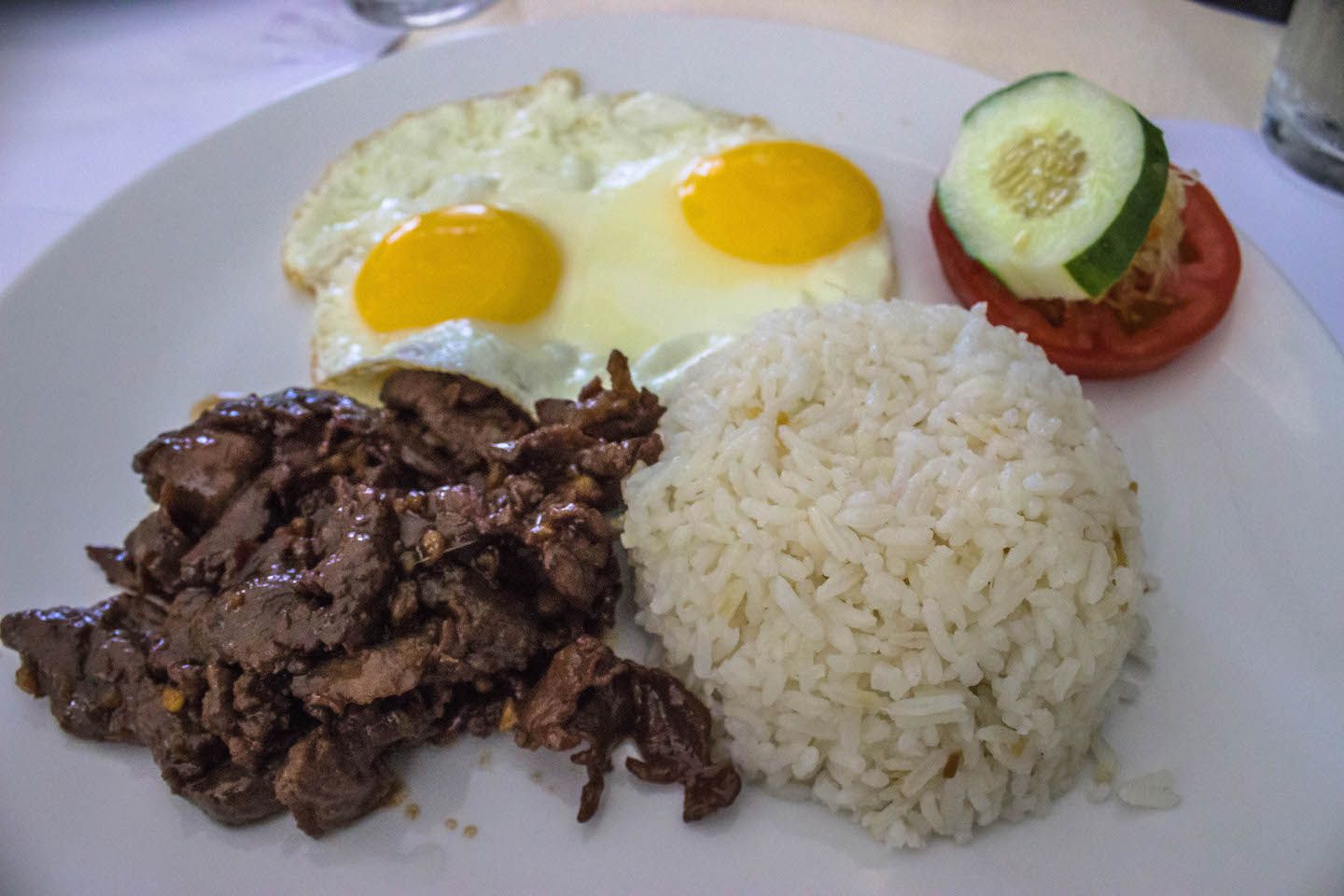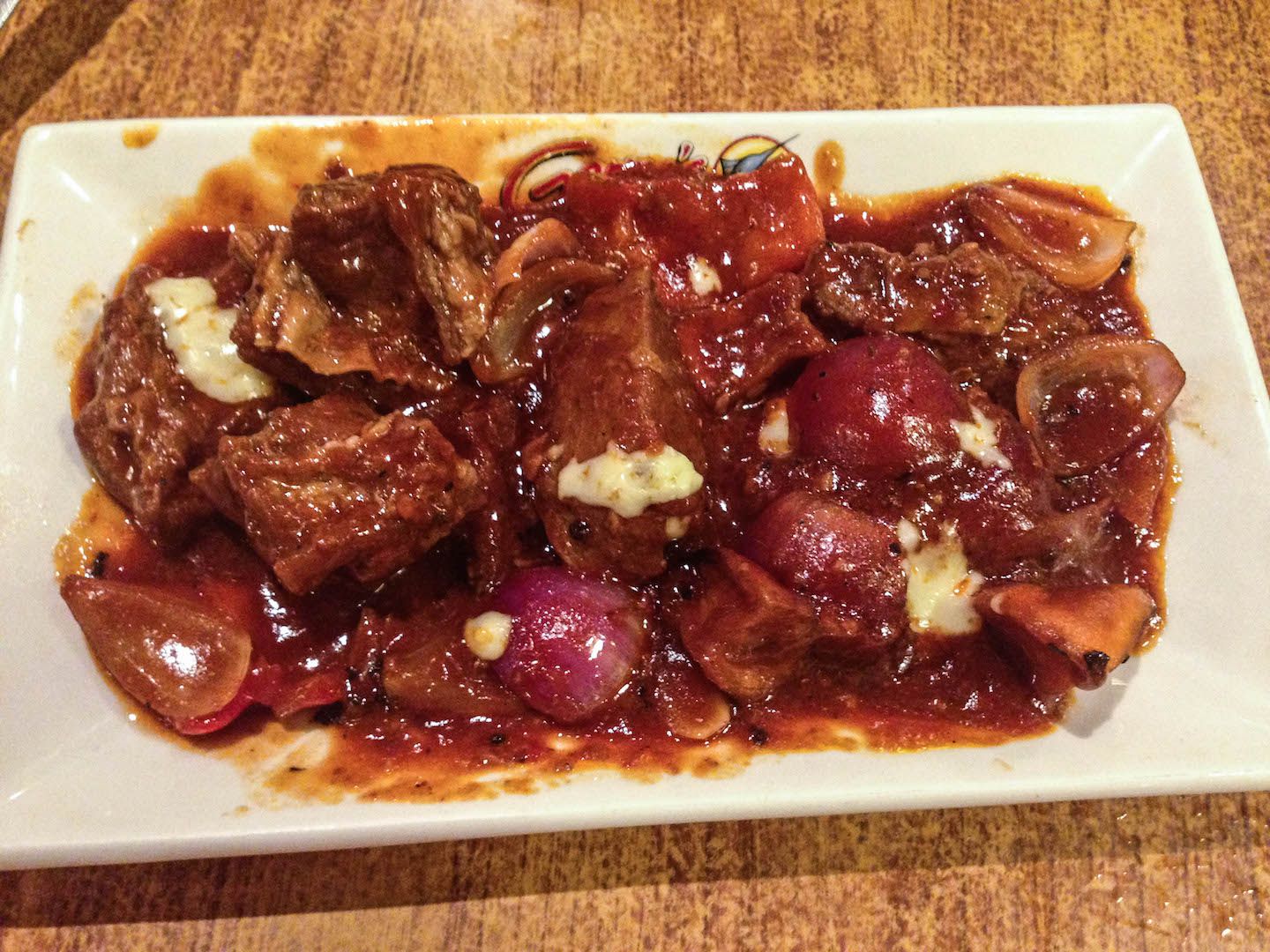One of the first impressions we had of the Philippines was the sheer amount of food options everywhere. Coming from South Asia, I admit I was looking forward to the much more familiar SE Asian food, if only because I would better know what to order from a menu. Of course, our local friend Jannelyn also gave us plenty of recommendations for Filipino food, both dishes and restaurants, which always helps.
Lechon
I have literally been waiting years and years to try roasted suckling pig in the Philippines. Known here as lechon, it’s a world-famous Filipino food. After many weeks in countries where meat was somewhat limited, more expensive, or hard to come by, it came as a surprise at first to have access to so much meat so readily. We tried lechon in several forms.

First, we had the great fortune of having a baby lechon. The piglet fed on its mother’s milk roasted whole is more tender than adult pigs, with a crispy skin. It was my first time seeing a whole pig, especially a piglet. The baby one was actually kind of cute, only about half a meter in length. Of course, it was delicious, perfectly juicy with just the right amount of fat and seasoning.

While in Cebu, we made sure to try Cebuano lechon, what Anthony Bourdain called the best pig in the world. Zubuchon certainly lived up to the expectation, though this time was an adult pig. The Cebuano version was more flavourful, which in some ways I liked more; however, it also meant that I couldn’t eat too much before the meat and taste combination became too overwhelming. Luckily, Zubuchon served perfectly sized portions.

Lechon kawali was another dish variant of lechon, a plate of crispy fried pork belly. It reminded me of one of my favourite Chinese dishes – red braised pork belly – but a deep fried version. The accompanying vinegar sauce helped to balance the oily and heavy flavours of the meat.

We saw street vendors selling lechon literally directly off the street. A giant pig on a table, passersby could buy by the kg. Lechon is truly everywhere in the Philippines! I made sure to have more than my fair share, especially knowing our next destination was the a mostly Muslim Indonesia during Ramadan (no pork!).
Main Dishes
Given that breakfast is the first meal of the day, it’s only fitting that we discuss first the typical Filipino food for breakfast – tapsilog. A portmanteau of the three parts that make up the dish – tapa (cured meat), sinigang (garlic-fried rice), and itlog (fried egg). A side of atchara (pickled papaya strips) comes along as well. Related dishes that also come with fried rice and fried egg have spawned with similar names. Cornsilog with corned beef, adosilog with adobo, tosilog with tocino, etc.

Going along with my obsession with pork in the Philippines, another signature pork dish was sizzling sisig. Pieces of pork head and liver are marinated in calamansi sour liquid and peppers. The sizzling hot plate always spreads the aroma before the food even hits your mouth. I often had a sisilog for a casual meal.

Other popular cooking methods and main dishes Filipino food include adobo and kaldereta, to name just two of many. Adobo is a wildly popular way of stewing meats in vinegar, soy sauce, and garlic. Kaldereta is a Spanish-inspired tomato-based meat stew. Now you can see why we were so pleased with all the variety in meat dishes in the Philippines, especially given the meat lovers that we are.

Desserts
No better way to cap off a meal of Filipino food than with Filipino desserts. For me, the most memorable one was halo-halo (winner for most interesting name for sure). Essentially it’s a bowl of milky shaved ice with a ton of other toppings all mixed together. From beans to nata de coco to sweet potato, halo-halo is reminiscent of faloodas in Sri Lanka, though with seemingly more ingredients. It makes for a very fun and colourful bowl.

Carlos’ favourites included the classic flan. The Filipino version – leche flan – is heavier, made out of condensed milk and egg yolk.

He also loved banana toron – banana pieces fried in a spring roll wrapper. It’s simple but tasty.

I, for one, really enjoyed Filipino food, especially the lechon (if that wasn’t glaringly obvious by now). Aside from the main dishes and desserts, we also savoured lots of fresh fruit, including the sweetest mangoes I’ve ever had. We are still enjoying several packages of dried mangoes to this day. There was never a dull day when it comes to Filipino food.

